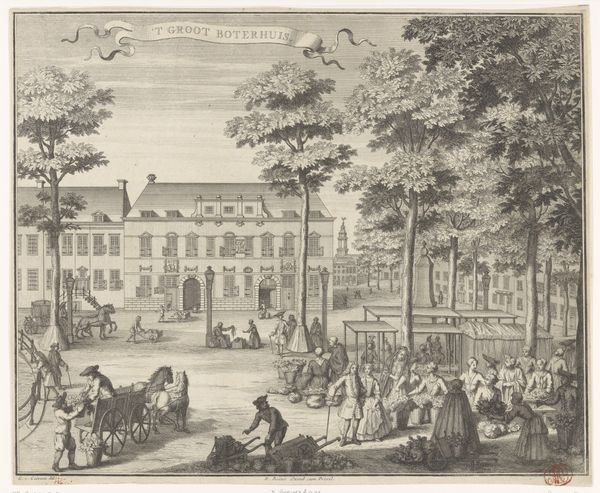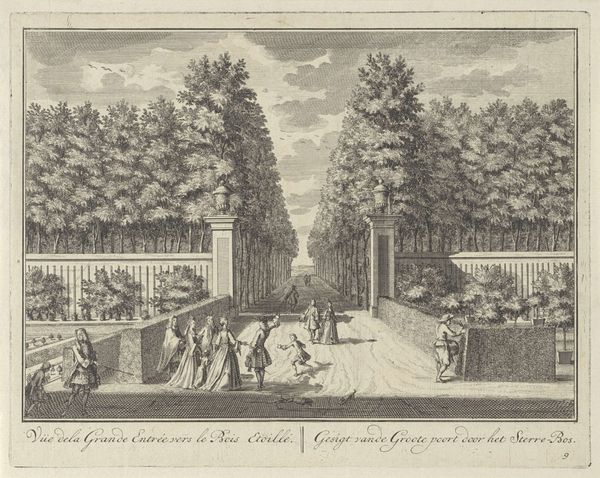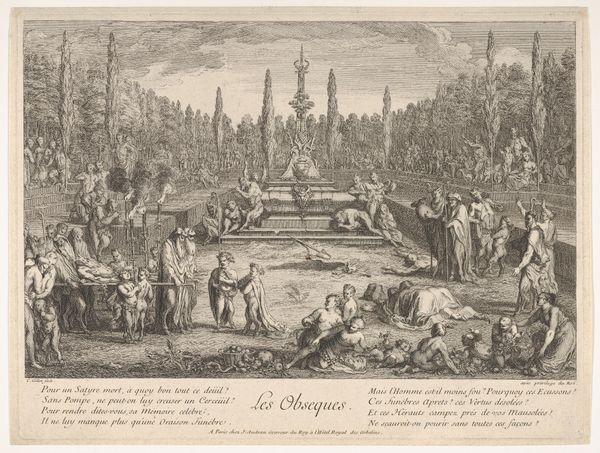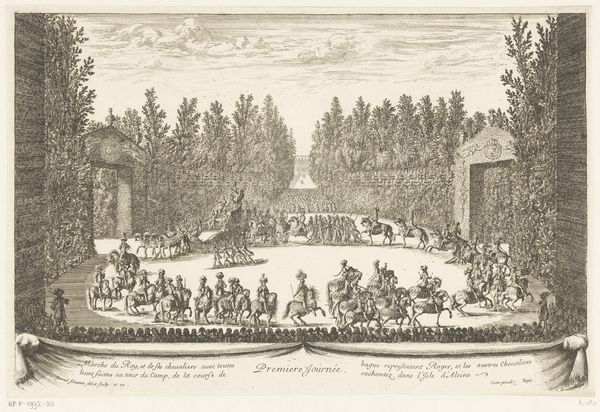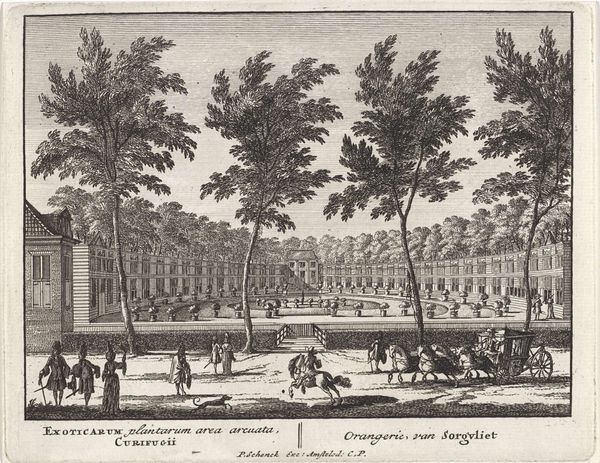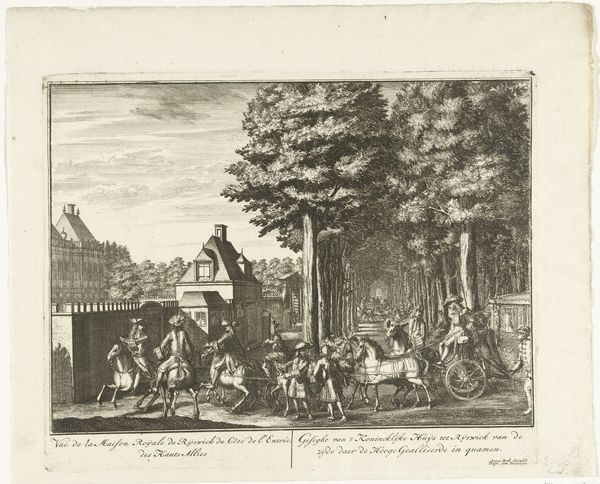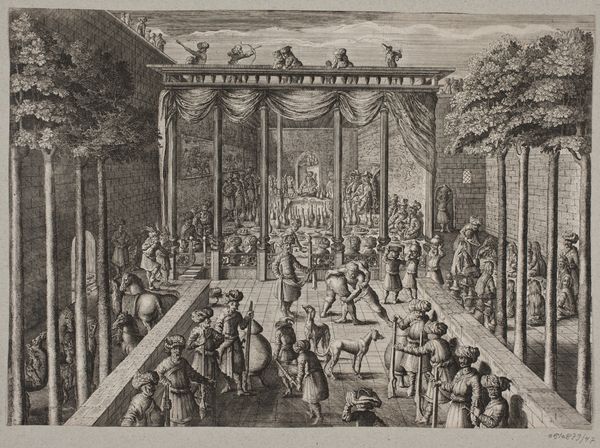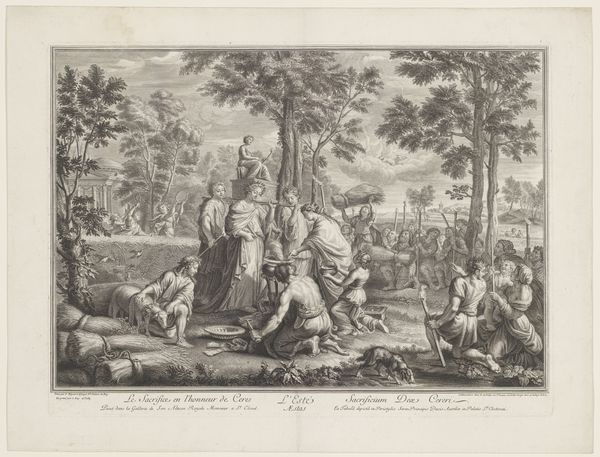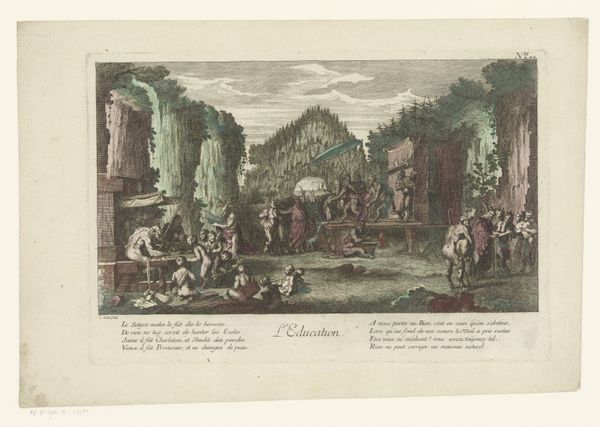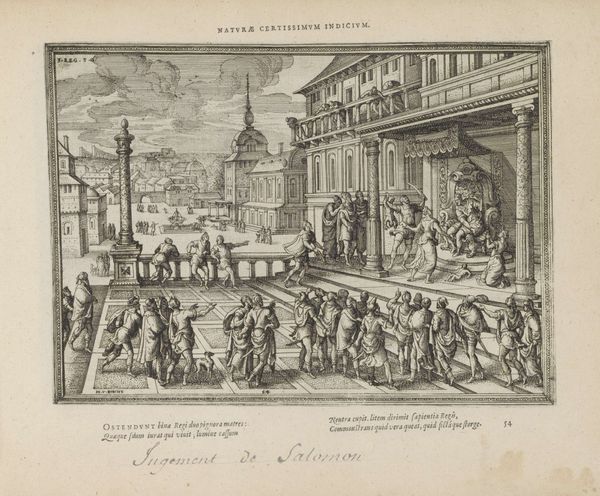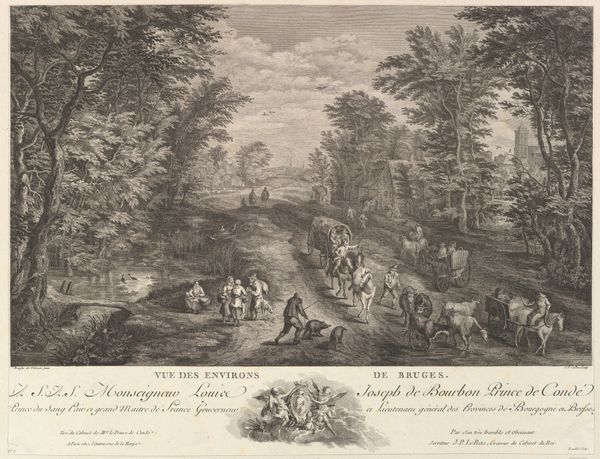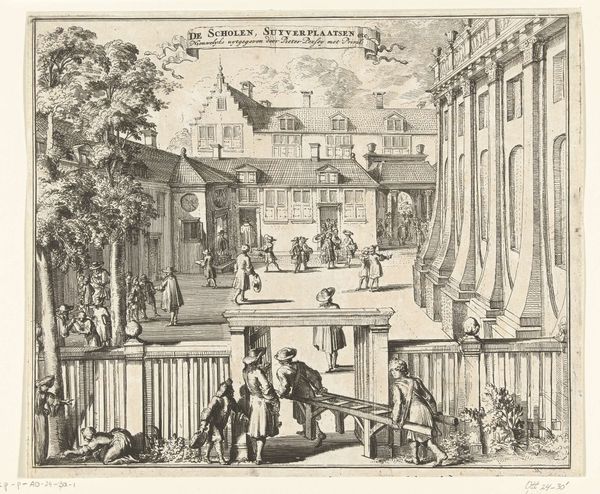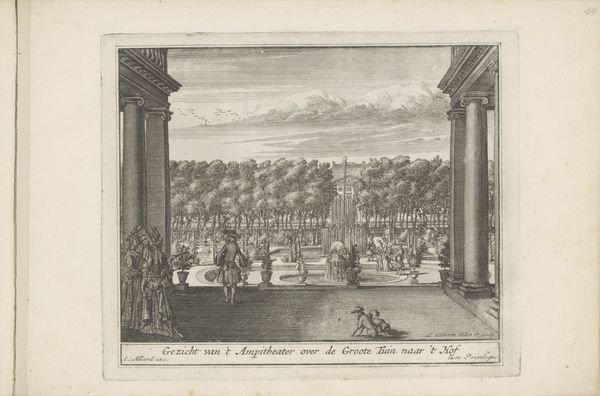
drawing, print, etching
#
portrait
#
drawing
#
baroque
# print
#
etching
#
cityscape
#
genre-painting
Dimensions: Sheet: 11 3/8 × 15 3/16 in. (28.9 × 38.6 cm) trimmed to platemark
Copyright: Public Domain
Curator: Pierre François Courtois's "La Promenade des Remparts de Paris" from 1760. It's currently held at the Metropolitan Museum of Art in New York, a rather bustling cityscape rendered as an etching. Editor: It immediately strikes me as an exercise in societal cartography. All these tiny figures, the lines forming the composition... a very busy atmosphere. Curator: Exactly. What’s striking is the layering of class structures, no? Aristocrats stroll leisurely while, observe there on the right, the workers busy themselves with commerce. This interplay speaks to both hierarchy and the foundations that permit such opulence. Editor: Yes, and notice how Courtois meticulously renders the clothing? Those enormous skirts, the fabrics practically dictate the body’s movement! Consider the labor—spinning the yarn, weaving the cloth, stitching and tailoring. Each element implies not only a craftsman but whole support chains behind luxury, creating visible hierarchies of access and ability. Curator: Indeed, look closer still; the composition isn’t simply representational but symbolic. Trees arch overhead and emphasize social rank—nature almost becoming architectural through carefully structured, rhythmic lines. The architectural features emphasize status and achievement! Editor: The use of etching is also crucial; it allows for these dense compositions filled with information. Each line is purposefully etched into the metal, dipped into acid, printed. Mass production meets high society for documentation of social class and the labor practices which produced its wealth! Curator: Absolutely, it creates a compelling tension, no? These materials capture ephemerality and movement as permanent structures, inviting sustained interrogation across the centuries of class boundaries and economic stratifications. Editor: Ultimately, what holds our interest is this dynamic between appearance and materiality. High fashion is, by this point in the 18th century, almost a science itself – the etching documents its emergence as an industrial reality and mode of life. Curator: Yes, how form renders an almost invisible structure to class itself, with fashion giving tangible symbols of its own internal structure. A fascinating window, rendered so deliberately. Editor: I’m struck again at all it reveals through its materials; an entire economic tapestry is literally imprinted into the image.
Comments
No comments
Be the first to comment and join the conversation on the ultimate creative platform.

